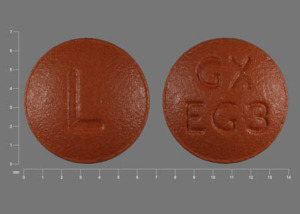Chlorambucil Interactions
There are 264 drugs known to interact with chlorambucil, along with 5 disease interactions. Of the total drug interactions, 52 are major, 198 are moderate, and 14 are minor.
- View all 264 medications that may interact with chlorambucil
- View chlorambucil disease interactions (5)
Most frequently checked interactions
View interaction reports for chlorambucil and the medicines listed below.
- 5-HTP (5-hydroxytryptophan)
- Acetaminophen-odan (acetaminophen)
- Acetylsalicylic Acid (aspirin)
- Activated Charcoal (charcoal)
- Adderall XR (amphetamine / dextroamphetamine)
- Adrenalin (epinephrine)
- Adriamycin (doxorubicin)
- Alprazolam Intensol (alprazolam)
- Amoxil (amoxicillin)
- Anoro Ellipta (umeclidinium / vilanterol)
- Anti-D (RHO) Immunoglobulin (rho (d) immune globulin)
- Aprodine (pseudoephedrine / triprolidine)
- Asacol (mesalamine)
- Celebrex (celecoxib)
- Co-trimoxazole (sulfamethoxazole / trimethoprim)
- Coenzyme Q10 (ubiquinone)
- Copper (copper gluconate)
- Dermatop (prednicarbate topical)
- Glycerol (glycerin)
- Heparin Sodium (heparin)
- Metoprolol Succinate ER (metoprolol)
- Paracetamol (acetaminophen)
- Quercetin (bioflavonoids)
- Tramadol Hydrochloride ER (tramadol)
- Tylenol with Codeine #3 (acetaminophen / codeine)
- Vitamin B1 (thiamine)
- Vitamin B12 (cyanocobalamin)
- Vitamin B6 (pyridoxine)
- Vitamin C (ascorbic acid)
- Vitamin D3 (cholecalciferol)
Chlorambucil disease interactions
There are 5 disease interactions with chlorambucil which include:
More about chlorambucil
- chlorambucil consumer information
- Compare alternatives
- Reviews (3)
- Side effects
- Dosage information
- During pregnancy
- Drug class: alkylating agents
- Breastfeeding
- En español
Related treatment guides
Drug Interaction Classification
| Highly clinically significant. Avoid combinations; the risk of the interaction outweighs the benefit. | |
| Moderately clinically significant. Usually avoid combinations; use it only under special circumstances. | |
| Minimally clinically significant. Minimize risk; assess risk and consider an alternative drug, take steps to circumvent the interaction risk and/or institute a monitoring plan. | |
| No interaction information available. |
Further information
Always consult your healthcare provider to ensure the information displayed on this page applies to your personal circumstances.


